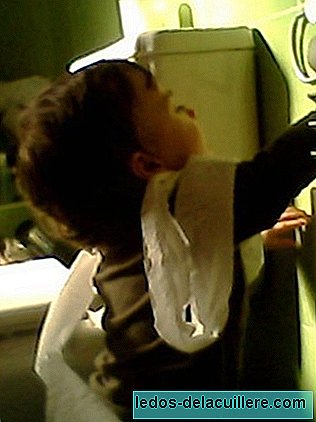
Nitrogen oxide or nitrous oxide (N2O) is a colorless gas with a sweet and slightly toxic smell. The "gas of laughter" or nitrous oxide is used as an analgesic in childbirth in some places with apparent success of results.
The use of this gas in a 50% mixture with oxygen (mixture called “entonox”) is an effective alternative in labor analgesia, and is commonly used in countries such as Canada, England, Finland, Sweden and Australia, in approximately 50% of births.
Nitrous oxide is very insoluble in blood and other tissues, providing a rapid induction of anesthesia and at the same time, rapid recovery after suspending the supply. It is almost completely eliminated by the lungs, with minimal diffusion through the skin.
Therefore, it is ideal in labor, at not affect the fetus or breastfeeding. In addition, N2O is easy to administer (pulmonary route, usually by means of a mask or aspiration nozzle), has a short latency and term of effect and does not depress uterine contractility.
One of the advantages of this analgesic method is that it does not prevent pushing during the active phase, since it does not nullify the reflex reflex, as well as adopt the desired position during contractions.
However, it does not exert a potent analgesic effect in the active labor phase. In concentrations of up to 50%, maternal self-administration under medical supervision is safe.

The entonox for childbirth, laughing gas "lowered"
Entonox is therefore an inhalable gas that contains 50% oxygen and 50% nitrous oxide. Its effect on inhalation neutralizes brain nerve transmissions, including pain. Nitrous oxide works by limiting synapse and neuronal transmission in the central nervous system.
The person when taking it feels pleasant dizziness and relaxation that can lead to laughter when there is no pain. Mothers still feel pain, but gas gives them some control about him that usually does not need other anesthetic means.
For its use it is recommended to instruct the parturient about the technique and about reasonable expectations of pain relief, as well as explain that N2O can make you feel slightly dizzy and / or nauseous.
The inhalation technique is intermittent: it must be started immediately when a uterine contraction is perceived. The inhalation mask should be removed between contractions and breathe normally.
Nitrous oxide has no formal medical contraindications, except in special clinical situations. There are other inhalational anesthetic agents, such as halogenated anesthetics (isoflurane, sevoflurane) of greater analgesic efficacy and less sedative compared to N2O, but require more complex equipment in pre-delivery rooms.
After seeing its advantages and disadvantages, I think it could be another option for mothers and its use could be extended as has been done in other countries.
In the United States decades ago it was discontinued in favor of other methods such as epidural (except in two centers that still offer it), but lately some hospitals of the "respectful" with childbirth are considering their reintroduction. In a hospital in Villareal (Castellón, Spain) it was introduced a few years ago as an option for a humanized delivery.
We must emphasize that the “gas of laughter” is reduced with high doses of oxygen to alleviate the hallucinogenic and toxic effects, obtaining entonox.
It is logical that this be done, otherwise the effects of this laughing gas, nitrous oxide as a pain reliever in childbirth it would make moms victims of uncontrollable hilarity attacks. A strange image ... and one of the happiest to give birth.
Photos | Jamzlife and music2fish2 (eric lanning) on Flickr-CC
More information | For a respected birth, AbcNews
In Babies and more | Epidural anesthesia could be replaced by an analgesic gas. What effect did epidural cause you?












